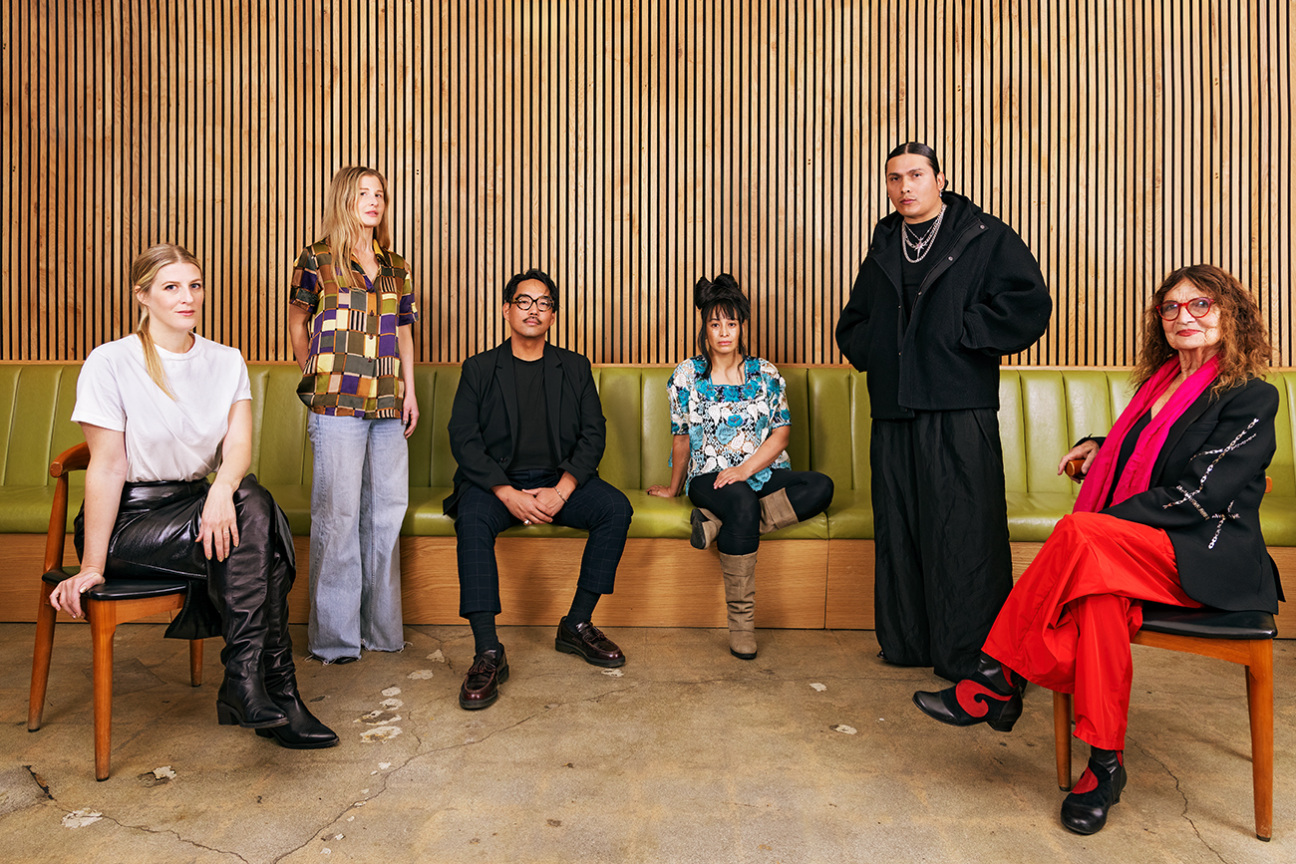
In keeping with Frieze Los Angeles’s deep fascination with its sprawling metropolitan host, this year’s edition of Frieze Projects offers an insider’s glimpse at the city’s cultural topography. Curated by Art Production Fund, “Inside Out” presents a series of installations by artists with deep roots in the city, diving into the microcultures and ecosystems that make LA so confounding, so romantic, so fraught. “‘Inside Out’ reflects on place—how we navigate the spaces where we land,” says Art Production Fund Executive Director Casey Fremont.
“Emerging from these works, often with a touch of whimsy, are reflections on movement, migration, and physical and social mobility,” adds Christine Messineo, Frieze’s director of Americas. Indeed, the program’s participating artists—six of whom share the origin stories behind their Frieze Projects contributions here—represent a wide range of Angeleno attachments. Their respective installations offer a touching homage to a city that, even in the wake of ecological disaster, is forever blossoming.
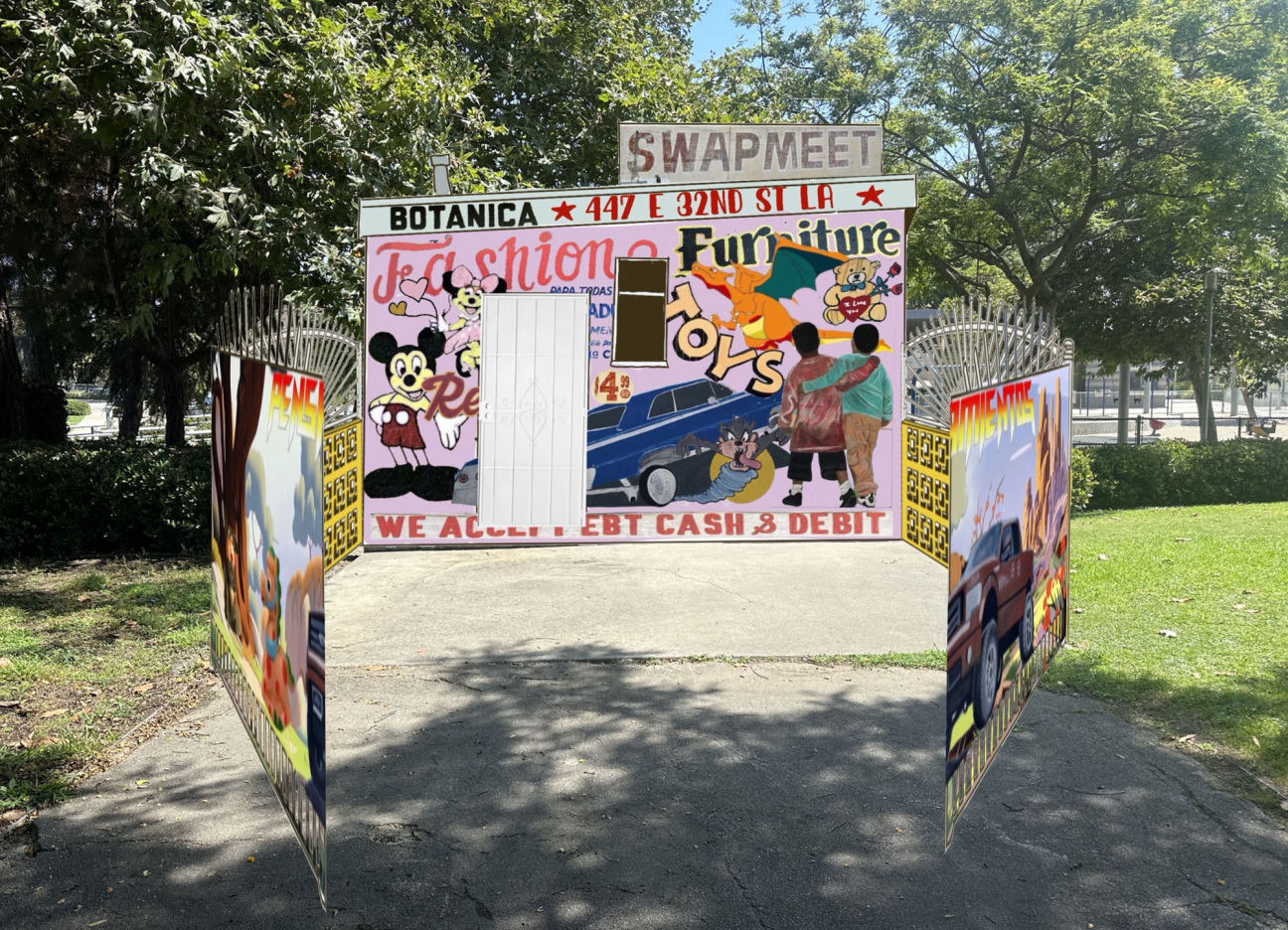
Ozzie Juarez, Pásale! Pásale! Todo Barato!, 2025
What memories or personal sources of inspiration did you draw from in devising your contribution to the "Inside Out" program?
The program will be held in Santa Monica, a place that holds deep personal significance for me. While I was born and raised in South Central LA, I spent several formative years studying art at Santa Monica College from 2010 to 2014. During that time, I made the long trek each day—about five hours in total—relying on public transportation. As I traveled, I couldn’t help but notice the gradual transformation of the cityscapes around me. With each passing neighborhood, the environment shifted. In Santa Monica, there were no murals of the Virgin Mary or famous cartoon characters painted at every corner, no bustling swap meets or street vendors on every block. The architecture felt less personal, less infused with the vibrant, DIY spirit I was used to. The gang graffiti faded away, and the community seemed more isolated, the streets quieter and more sanitized. Yet, in the contrast between these two worlds, I found inspiration. For Frieze Projects, I wanted to bring a piece of South Central to Santa Monica, to bridge these contrasting realities. In a way, this project is about reclaiming space—not just geographically, but culturally.
What is one aspect of Los Angeles that has always captivated you, and how is it reflected in your contribution?
Its essence as a true melting pot. LA is a city where countless cultures from almost every corner of the world come together. You can find a little bit of everything, and this diversity profoundly influences my work. Los Angeles is constantly changing, growing, and transforming alongside its people, and that is what makes it so inspiring. I want to infuse the concept of worlds colliding into my work, creating an experience that allows people to immerse themselves in the contrasts and beauty that the diverse neighborhoods of Los Angeles have to offer.
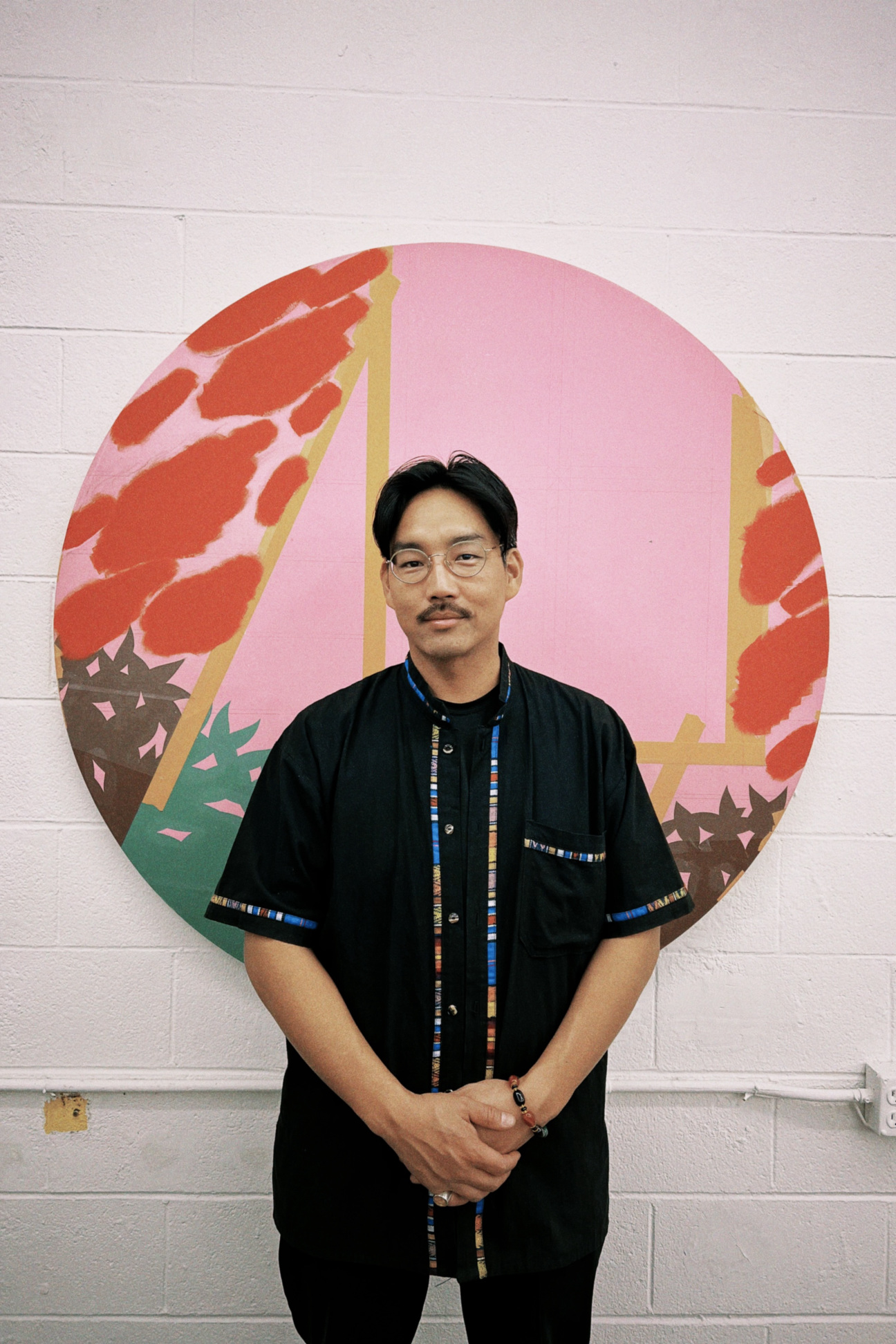
Greg Ito, A Time to Blossom, 2025
How does the story of your site-specific work for Frieze Projects begin?
My Frieze Project began with an explorationof a recurring symbol in my work—a burning candle. Amidst the wildfires affecting our city, it evolved naturally into a new sculpture: a golden clock with flowers sprouting from its top, titled A Time to Blossom. This piece symbolizes hope, a reflection on time’s capacity to heal, and a testament to the resilience and enduring spirit I believe thrives in Los Angeles.
What memories or personal sources of inspiration did you draw from in devising your contribution to the "Inside Out" program?
The work is deeply inspired by my family history. I’m a fourth-generation Japanese American and Angeleno, with roots in this city that stretch back over a century. My family’s experiences during the Japanese internment camps of World War II, and their resilience in rebuilding their lives here, are central to my reflections. Generations later, our family remains strong and continues to call LA home. These stories of perseverance and hope shape my work, which often explores themes of time and life’s cycles as threads that connect the past, present, and future. Also the flowers in the sculpture are a loose interpretation of my family sign, known as "Mon," which depicts a plum blossom.
Most underrated thing about LA?
The most underrated thing about LA is driving. People often complain about how much time you spend in the car and how far everything is, but I love it. There’s so much to see, and countless treasures to discover in its vast landscape. You can always find special places that feel like your own secret.
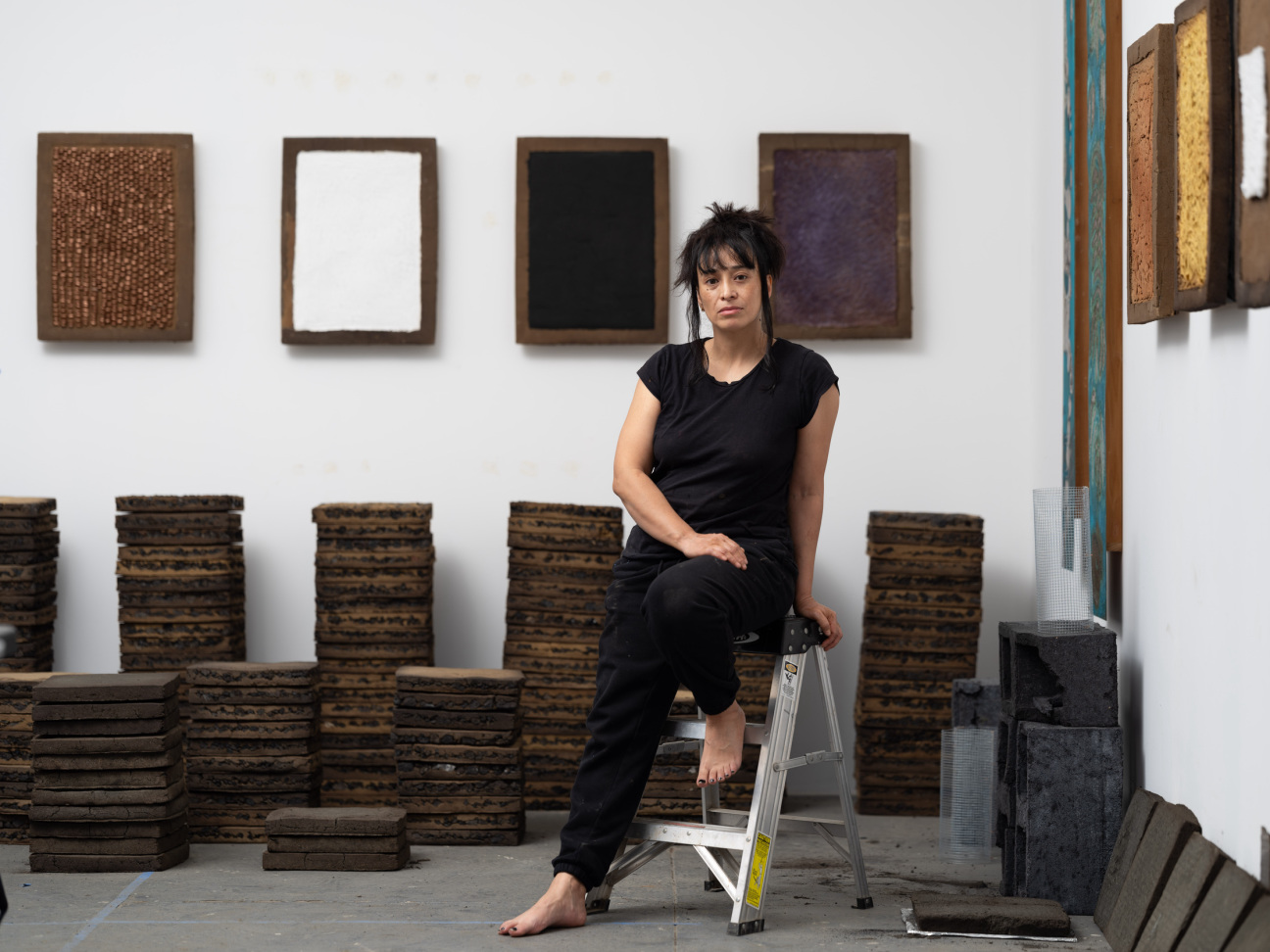
Jackie Amézquita, Trazos de energia entre trayectorias fugaces (strokes of energy between impermanent traces), 2025
How has Los Angeles shaped your practice?
Since 2003, Los Angeles has been my art incubator, a city that captivates with its diverse landscapes, vibrant neighborhoods, and rich cultural tapestry. While navigating life here as an immigrant has posed challenges, I have actively adapt an embraced those challenges and developed essential survival strategies. I have also created a constellation of communities that I treasure deeply. These approaches have been pivotal in my integration into LA, and many of my artworks reflect these transitions and experiences. With over 3.5 million migrants, Los Angeles stands as a testament to diverse cultures and stories. The unique narratives of individual and collective identities emerging from our migratory journeys profoundly influence my work.
How does the story of your site-specific work for Frieze Projects begin?
In researching the history of Santa Monica, I found intriguing stories about World Wars I and II, railroads, electric trolleys, and cruises, all highlighting the pivotal role of transportation in the city’s development. I also found related histories to the Kuruvungna Springs, a stream beneath a cypress tree on the site of a former Tongva village, now the location of University High School in West Los Angeles. The Tongva consider these springs, flowing at 22,000 gallons per day, sacred and continue to hold ceremonies there. This information led me to reflect on coordinates, maps, natives, non natives and how humans have navigated and reshaped the land throughout history.
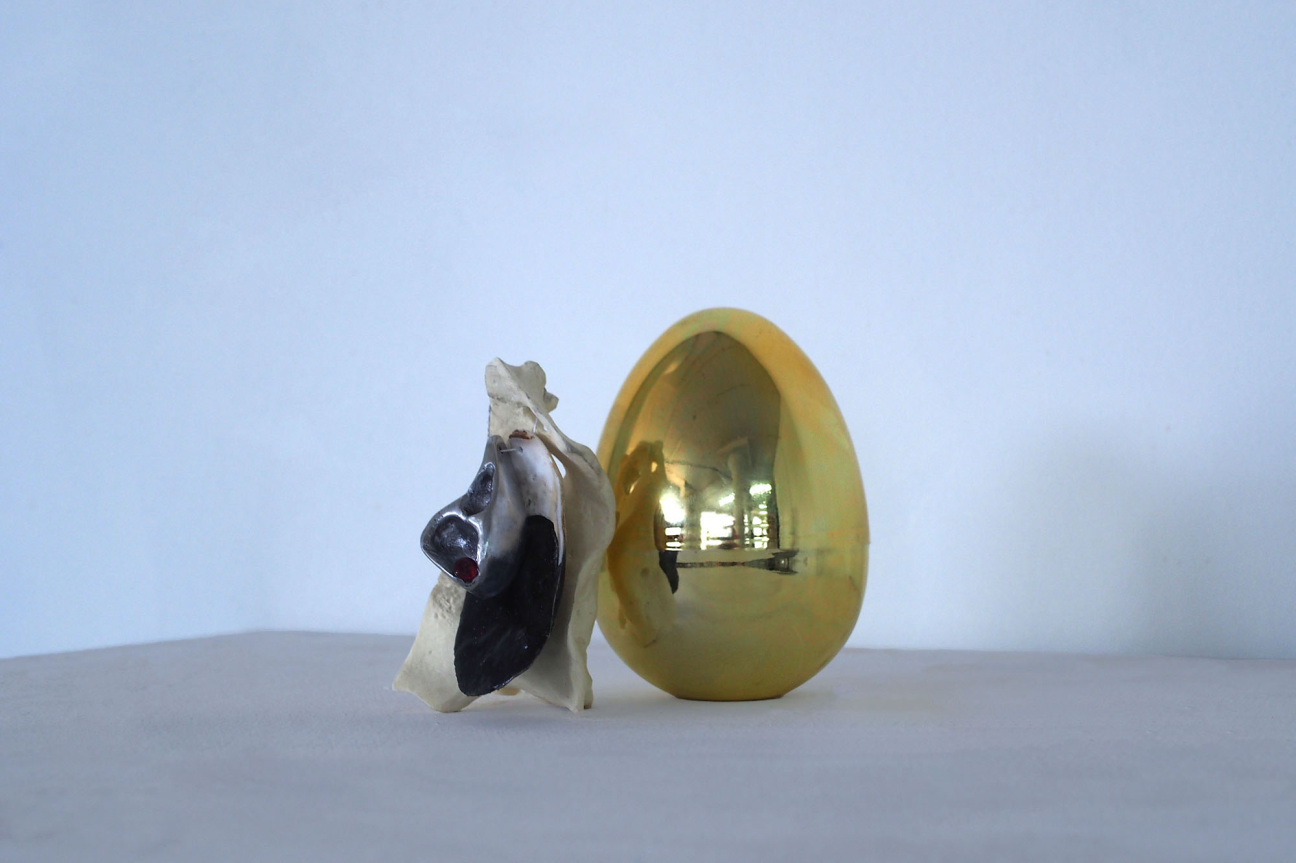
Claire Chambless, Player, Non-Player, 2025
How does the story of your site-specific work for Frieze Projects begin?
Player, Non-Player questions the salvific nature of art acquisition by drawing attention to the symbolic nature of purchasing. The work follows a foraging or gift-giving model rather than monetary exchange—everyone has an equal chance to find and acquire a piece. If they do, they will get a handmade talisman. In light of the fires that have caused such inconceivable devastation in Los Angeles, giving and sharing things that can hold memory feels more important than ever.
What is one aspect of Los Angeles that has always captivated you, and how is it reflected in your contribution?
The theatricality of everyday life here fascinates me. Performance is embedded in much of the city’s architecture. The title of my artwork references the two categories video game characters fall into. The juxtaposition between performer and performed-up will be enacted and complicated as people interact with Player, Non-Player in much the same way that LA enacts and complicates that same blurry boundary.
Most underrated thing about LA?
The planetarium shows at Griffith Observatory. They’re the best.
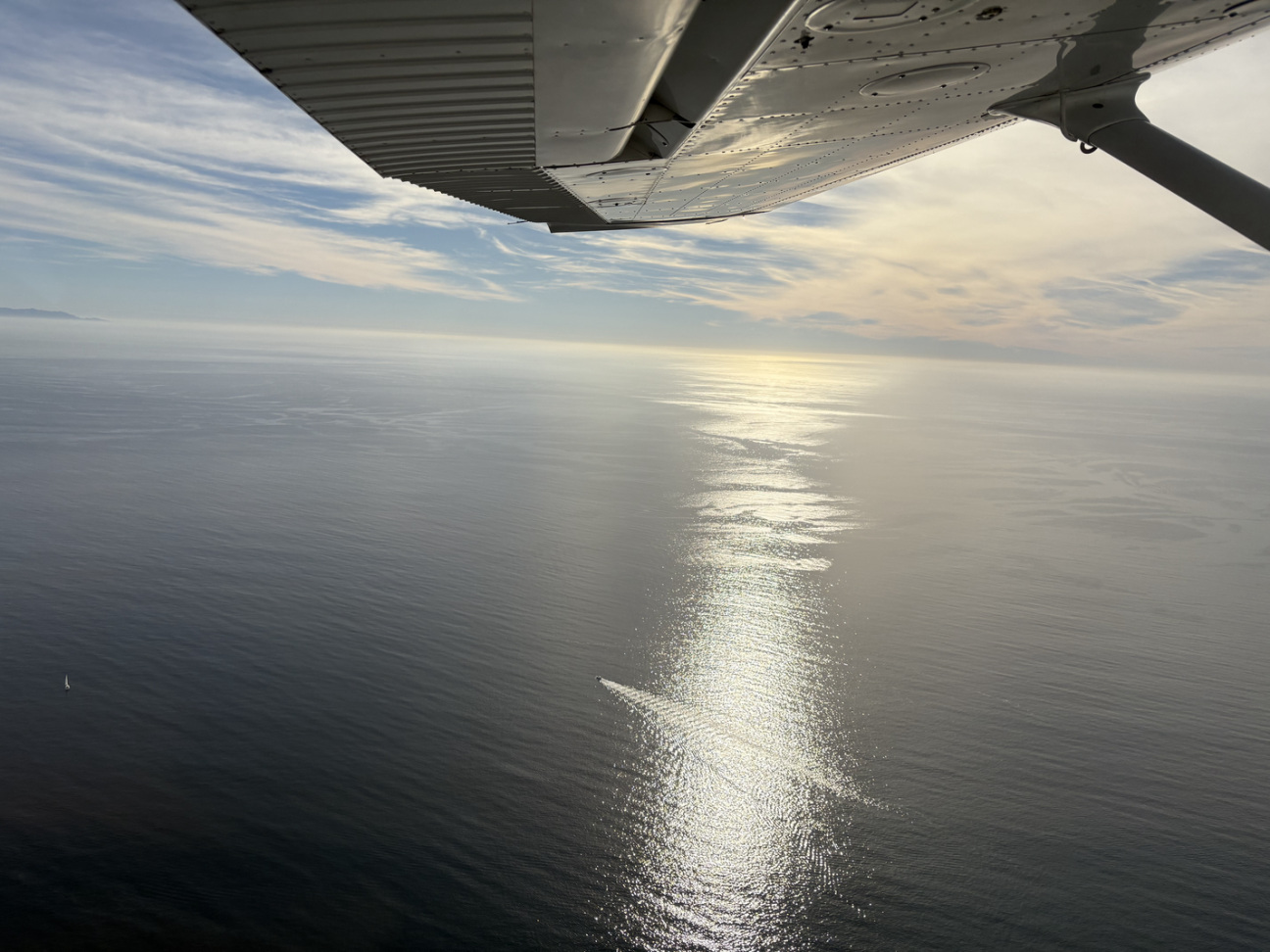
Madeline Hollander, Day Flight, 2025
What memories or personal sources of inspiration did you draw from in devising your contribution to the "Inside Out" program?
Day Flight originated from my experience learning to fly as a teenager. The instructor was a family friend who knew that I was a serious ballet dancer, so he decided to correlate all parts of the plane to the body and all aspects of flight to choreography. I was instructed to physically enact slipping my arms through each wing of the plane before take off. When choreographing Day Flight for Frieze, I expanded upon the idea that the plane was the dancer; I viewed the air traffic control tower as the stage manager calling all the cues, the pilot as choreographer, the weather as the continuously evolving scenic designer, the sky as the stage, the runway as the backstage, and the “passenger” in this case as the audience member. Unlike sitting in the audience facing the stage, this audience gets to experience the mastery of the choreography from the inside out.
Describe the effect of your work—how do you want visitors to engage with it, and how do you hope it will affect them?
Day Flight offers a guide to your body in relation to the plane, the wind, and LA’s recently ravaged landscape. While the panoramic views of the Pacific Palisades and Malibu are undoubtedly devastating, its harsh transformation is a reminder of the ephemerality and fragility of our environment, and the acute reality of living with climate crises.
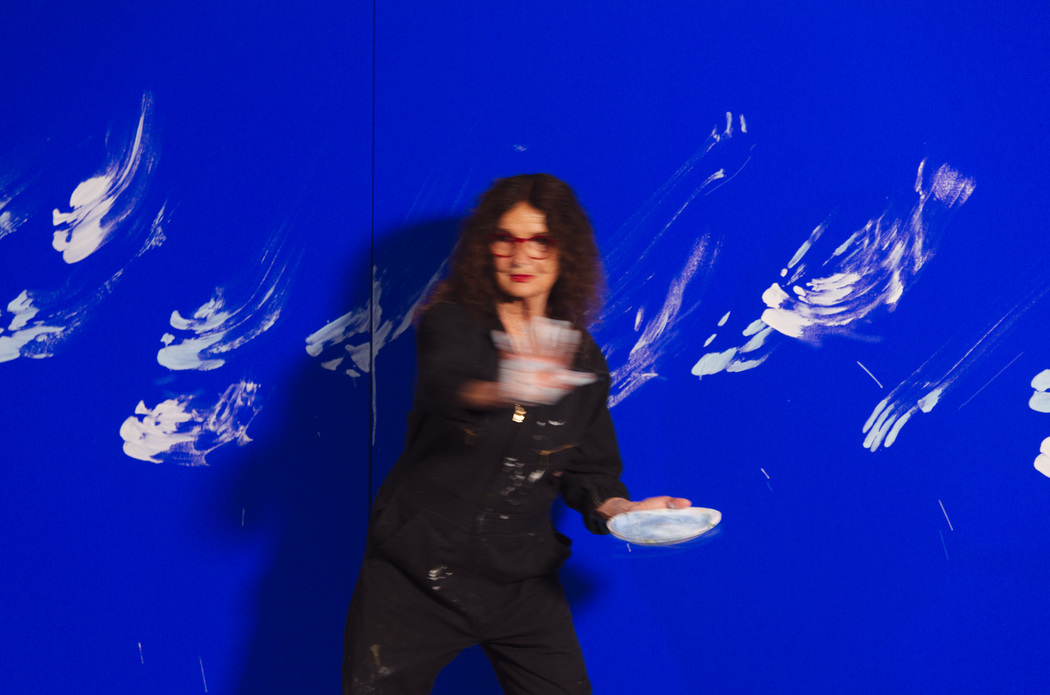
Lita Albuquerque, Turbulence, 2025
How does the story of your site-specific work for Frieze Projects begin?
The story really begins in my childhood growing up in Carthage, Tunisia, and the ruins below the convent I grew up in, where piles of rocks and fractured columns remained as sentinels to the sea. Rocks have a life of a totally different time signature then ours, and I wanted to explore that. It continues decades later when living in Malibu and teaching at UCSB's College of Creative Studies. I would collect rocks on Route 1, put them in my blue van, then bring them to my studio in Venice where I began to pour powder pigment on them as a way of enlivening them and reflecting what I felt was within them … Turbulence comes as a response to the fire storm that has devastated Los Angeles and the arts community. The title embodies what we are feeling now that even the Earth itself is expressing this moment in time. Even something as solid as rock can feel the turbulence of the times we are in.
Describe the effect of your work—how do you want visitors to engage with it, and how do you hope it will affect them?
I want people to be surprised, to say, "Wait a minute, what is this? This is not supposed to be that way." I want the color to get to them. I want them to stop in their tracks and see and listen. I hope my contribution gives people a chance to think about their relationship to the earth and their position in the cosmos.
Most underrated thing about LA?
The fact that it is essentially a grid of buildings surrounded on three sides by the desert and on the other by the ocean. As we move forward in the ravages of global warming, like these current firestorms, it is something to think about, how to understand the land we are living on, and what to do to protect it from this moment onward into this new future. We must accept the fact that we are now living through a new era regarding our relationship to the land.
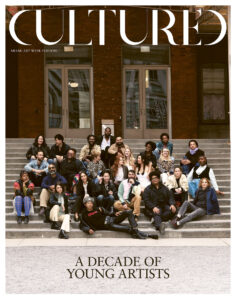
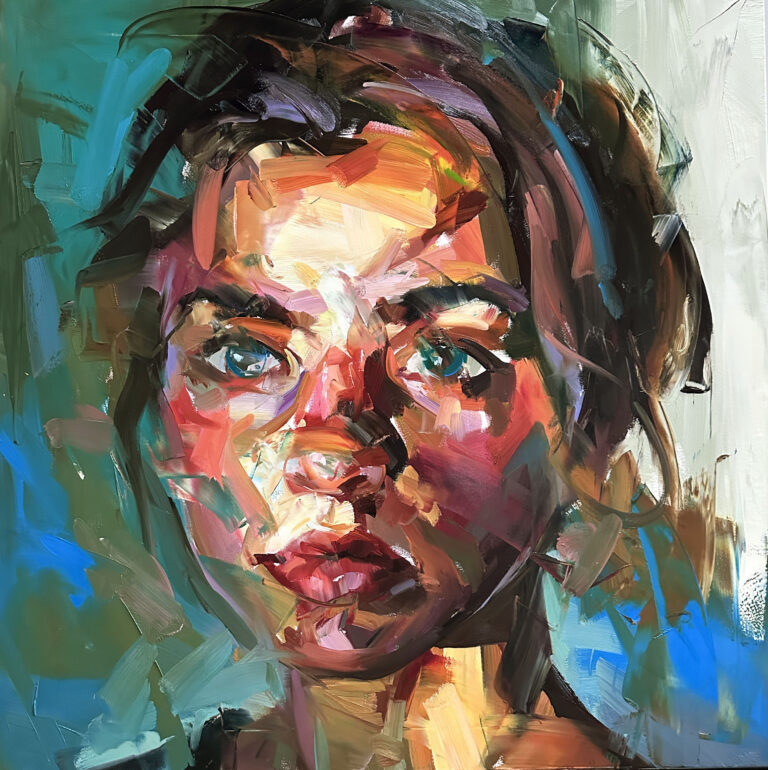
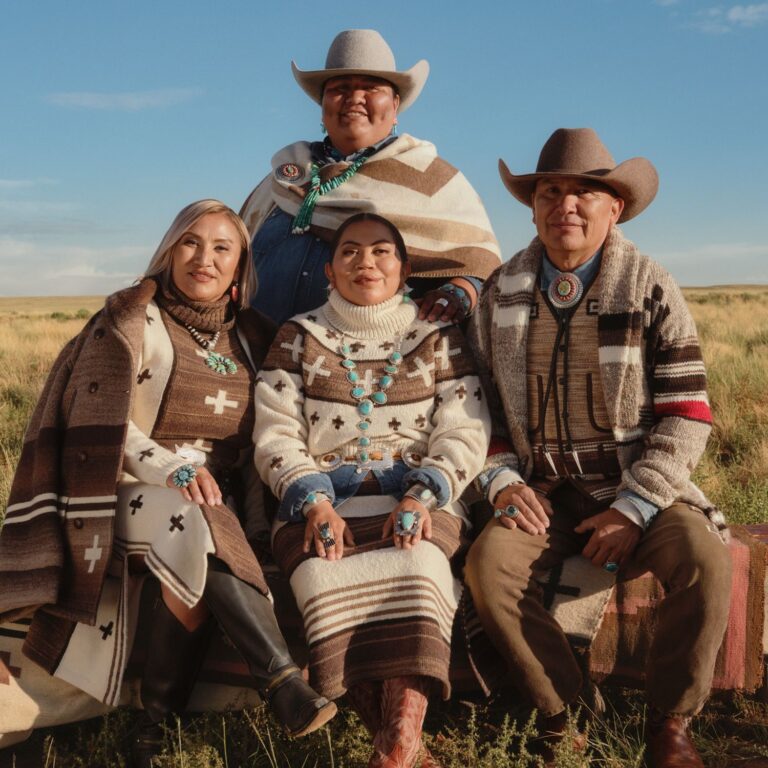
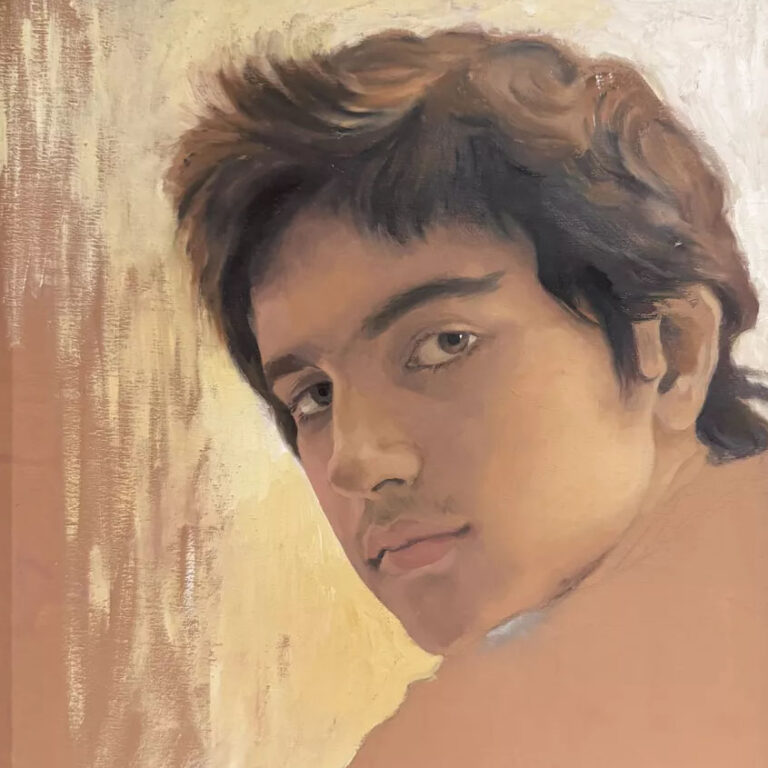
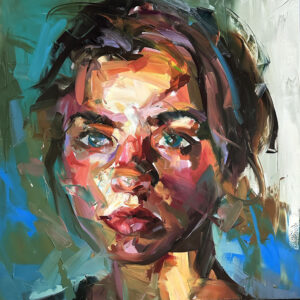
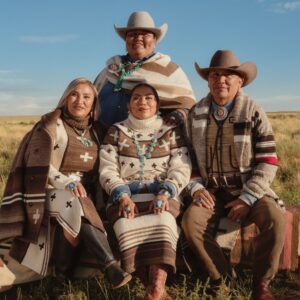
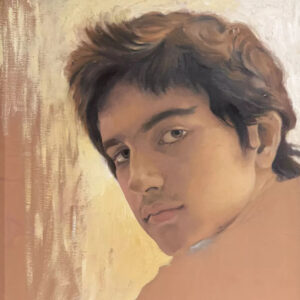

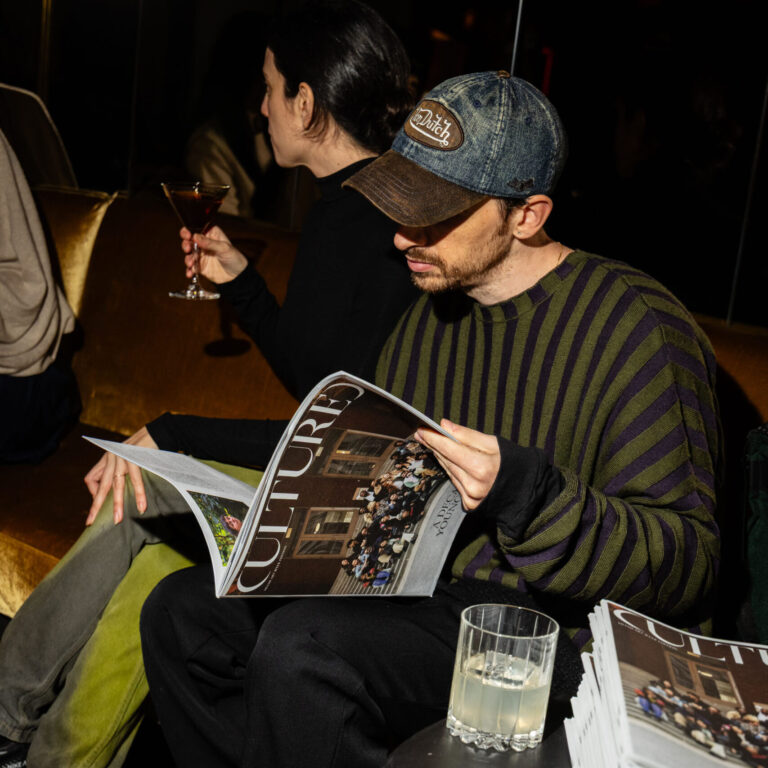

 in your life?
in your life?

